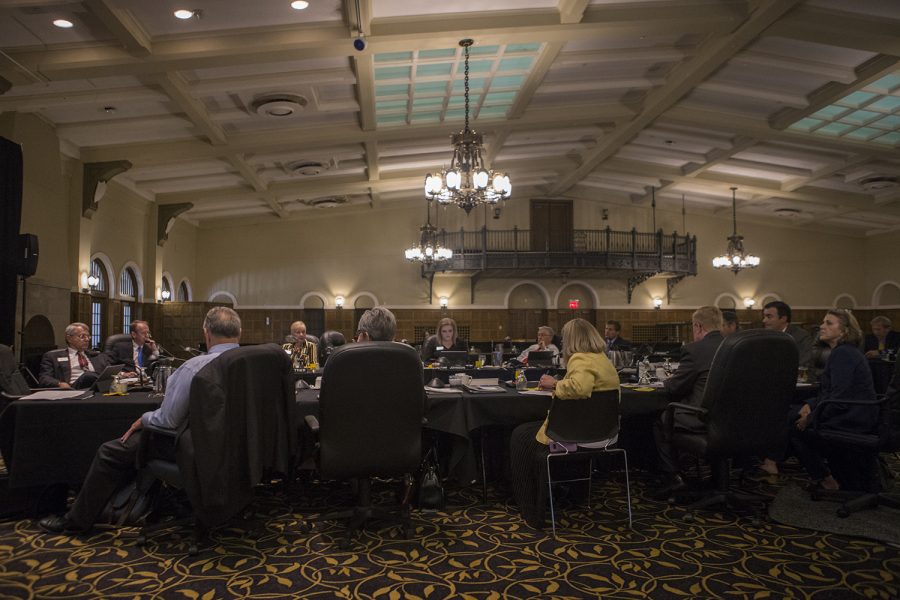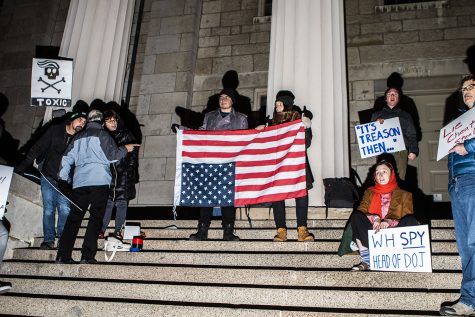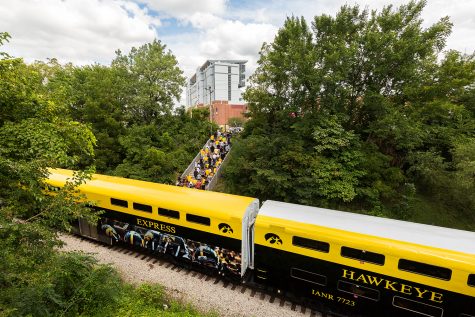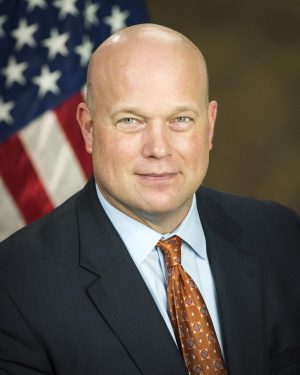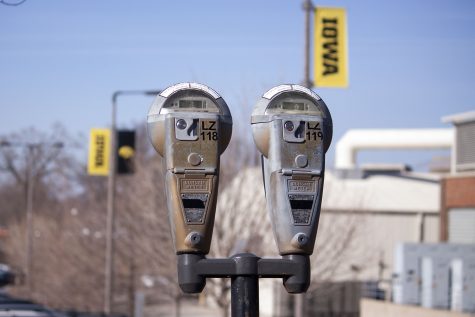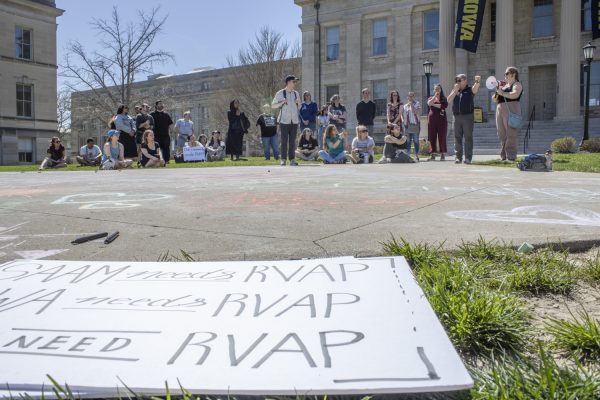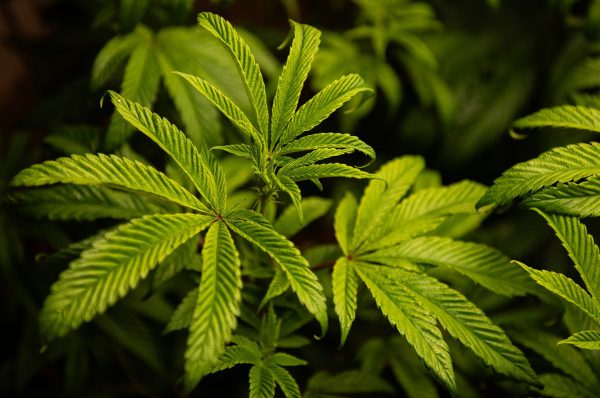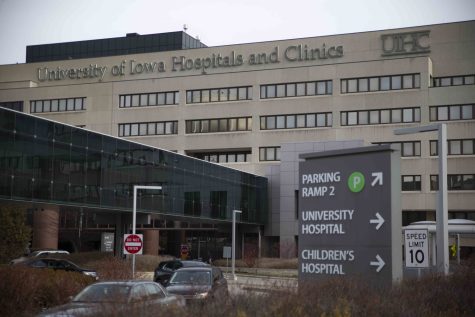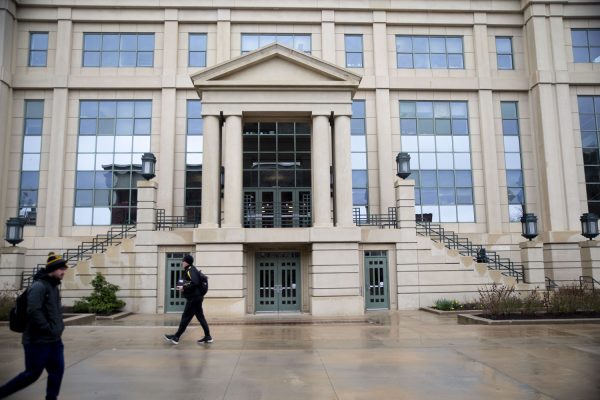Iowa regents plan to take ‘holistic approach’ to funding universities
The state Board of Regents will discuss plans for its multiyear tuition model Nov. 15 to plan for the universities’ resource needs as state funding declines.
Regents listen during the state Board of Regents meeting on Sept. 12, 2018 in the IMU Main Lounge.
November 8, 2018
Following calls for more predictable tuition increases in light of continued state funding cuts and tuition hikes, the state Board of Regents will discuss the multiyear tuition model that has been in the works for the three public universities it governs at its Nov. 15 meeting.
The regents are slated to hear a report on tuition and resources on the first day of their Nov. 15-16 meeting on the University of Northern Iowa campus. Regent spokesman Josh Lehman said the multiyear tuition model will be discussed at that time.
At the September meeting, the regents announced they would provide more details of the plan in November. Their aim is to take a “holistic approach” to funding the regent universities, involving “state appropriations, tuition revenue, and internal reallocations from efficiencies gained and realized savings,” according to regents’ documents.
Regent President Mike Richards has previously said the plan will likely lay out a baseline range of tuition increases for the next five years or so with a focus on resident undergraduate tuition rates.
Once finalized, the plan will start in the 2019-20 academic year. A first reading of the proposal for that year’s tuition increases will come during the 2019 calendar year.
The documents currently do not outline specific details of the plan but note the dwindling state funding and rise in tuition that has occurred all while enrollment has spiked at Iowa’s regent universities, meaning there are fewer resources to spread among more students.
RELATED: Will higher education remain accessible as funding becomes less public?
In September, the regents approved their fiscal 2020 appropriations request, which totals nearly $630 million — $499 million of which would go toward the universities’ general funds.
The request included a $20 million increase that would be dedicated to supporting resident-undergraduate financial aid. Of that amount, the regents are asking for $7 million to be allocated to the University of Iowa and Iowa State University each and $4 million to go to the University of Northern Iowa.
“Every year is different, and we think our request is reasonable and we work with the universities and we’ve been working with the Legislature for over a hundred years,” Richards previously said. “There’s always a little give and take, but we feel our requests are within the range of what we expect.”
In the last legislative session, the state Legislature passed $10.9 million in fiscal 2018 budget cuts to the UI and ISU, keeping UNI’s budget intact. By the session’s end, Gov. Kim Reynolds signed off on a bill that provided for a funding increase in fiscal 2019 of $8.3 million, leaving $2.6 million unrestored.
The UI seeks to generate $31 million in additional resources per year to “create better outcomes through the implementation of the strategic plan,” according to regents’ documents, and is committed to finding $10.9 million of those resources through realignment, savings, and other activities.
That leaves a funding gap of $20.1 million, $7 million of which regents will ask to fill with the fiscal 2020 appropriations request.
“Of the remaining $13.1 million, the university will work with the Board of Regents to determine tuition increases that are sustainable and predictable to ensure the student experience is valuable and the value of a University of Iowa degree is enhanced,” the documents stated.
UI President Bruce Harreld has advocated for hiking tuition rate increases to help the UI reach the median of its peer group and better fund its priorities. The documents show the UI’s 2018-19 rates rank the second lowest of its 10-university peer group.
University officials have often called for more resources to lead to better outcomes, such as improved graduation and retention rates, for students as the UI has fallen seven spots in U.S. News & World Report rankings since last year to No. 38 among the country’s best colleges.
RELATED: University of Iowa falls in rankings, blames dwindling state funding
“The US News rankings are a stark illustration of what happens when there’s not enough investment by the state in higher education, which will necessitate additional investments by students and their families,” Harreld previously said in a statement to the DI. “Continuing the generational disinvestment will result in further reductions in outcomes for students and the university.”



